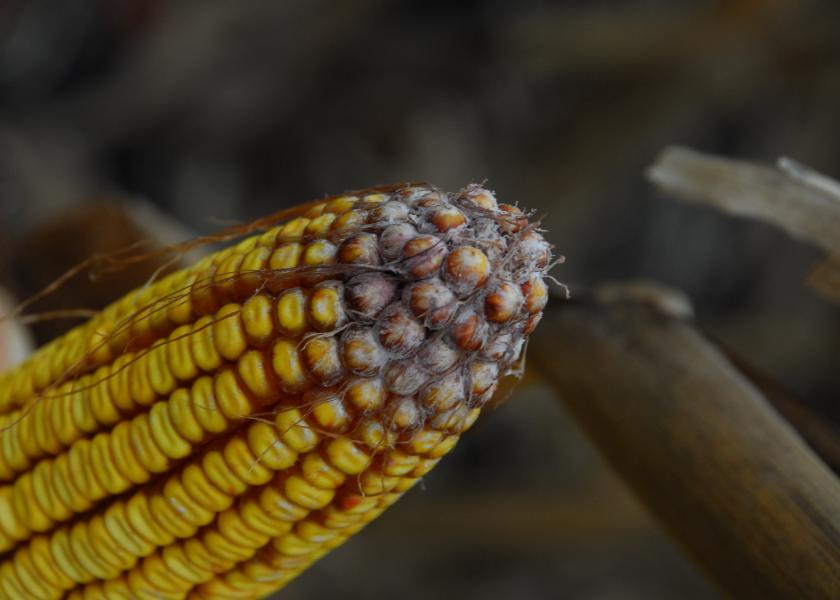Need-To-Knows Of Moisture, Quality Deductions And Long Elevator Lines

Corn is coming in wetter and with lower test weights than normal. For many farmers this might mean they don’t have the drying capacity to keep up with harvest—but does the local elevator? If you have wetter, poorer quality grain, should you sell it to get rid of it?
“This year reminds me of 2009,” says Angie Setzer, vice president of Citizens Grain, LLC. in Michigan. “It never fully dried down and test weight never recovered. We had a lot of broken, nasty corn.”
Farmers who get a killing frost before black layer are going to be at an even greater risk of lower quality. That’s a risk for many farmers in the northern Corn Belt. Even in areas without a frost, in-field drying might not be feasible because of stalk quality. Either way, drying will be essential and in potentially short supply this year.
Tips for working with the elevators or co-ops
“No one wants to push a customer away,” Setzer says. “The drying services are where they’re going to make their money, and it’s a much-needed service.”
She says elevators that are accustomed to wet grain will be setup better this season, namely the upper Midwest. Areas that don’t deal with higher moisture commodities might run low on storage for wet grain.
“There could be slow dumping,” Setzer advises. “It’ll shut down early on the best day of harvest, but that happens every year.”
Typical drying cost is about $0.04 to $0.06 per bu., but because it’s a function of supply and demand those numbers could be inflated in parts of the U.S. this year, she says. You can work with your buyers to contract ahead of time.
“We’re all in this together this year,” she says. “It’s been a rough year for elevators, too. We try to be understanding of everyone’s situation. If you don’t like something, talk to your buyer about it. But don’t be afraid to seek third party information, too.”
What you should know about quality deductions for sales
“If you’re negotiating sales and making contracts, make sure you’re negotiating discounts,” Setzer says. “It’s very important to be comfortable with the discount schedule.”
There could be value in shopping around—which you’re likely already doing with basis. Some elevators are more selective when it comes to discounts, while others provide more flexibility. If you don’t like the answer you’re getting at one, it doesn’t hurt to look elsewhere.
“The feeder market tends to be more willing to take in lower test weight and sometimes lower quality,” Setzer says. “Heat damage is the worst.”
Two ways to avoid heat damage
You can get heat damage from corn that’s stored too wet, or from trying to dry wet corn too fast. Setzer provides two tips to minimize damage:
- If you’re storing wet corn, keep it moving. If it sits in one spot and it gets hot, it can start to ferment. Fermentation is the enemy—unless you’re feeding cattle.
- When you’re drying corn don’t turn the heat all the way up to get it done faster. You’ll see more shrink and breakage. Like with a barbecue, low and slow is the way to go.
It’s going to be a rushed harvest because so many areas are behind. Do your best to have a plan in place—whether it’s drying at home or at an elevator. Consider incentives elevators might offer and do the math for what it costs to dry at home. Don’t let 2019’s crop rot in the field; work now to salvage all you can.







